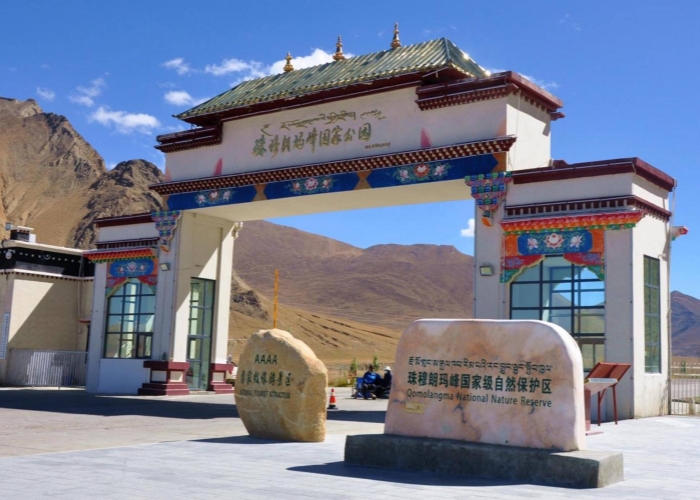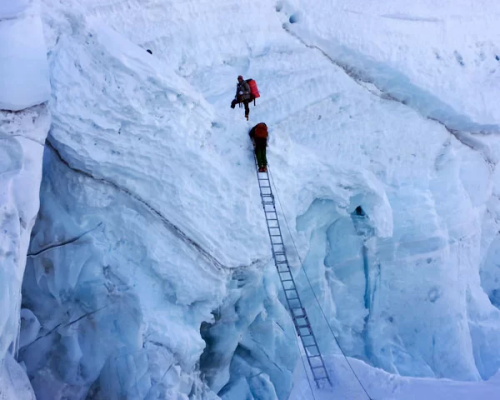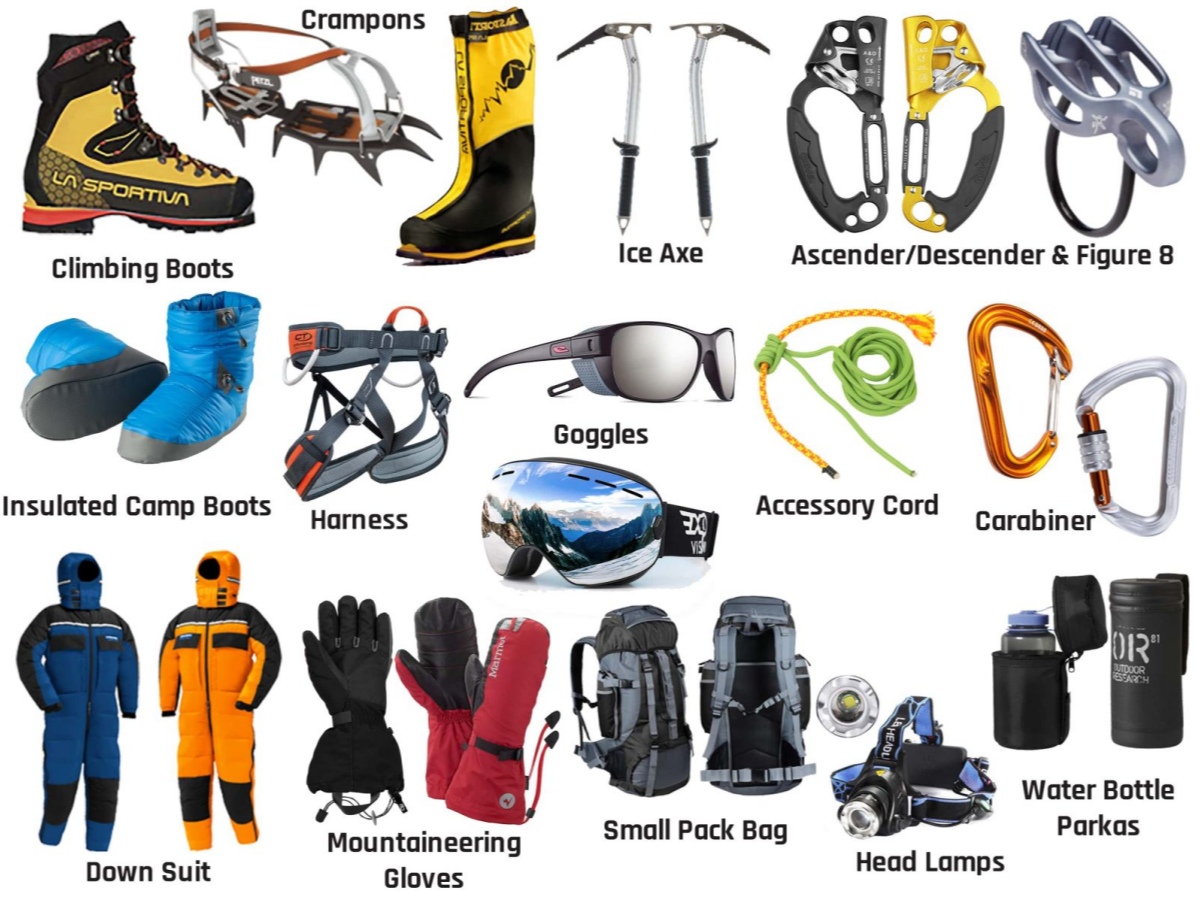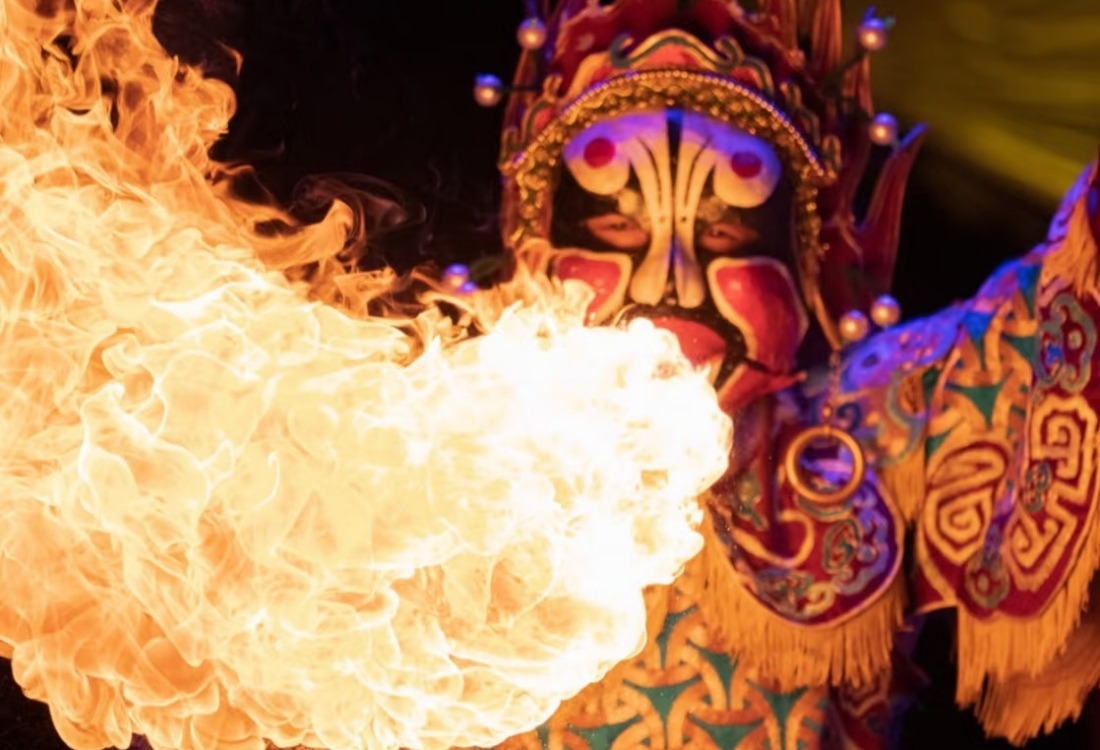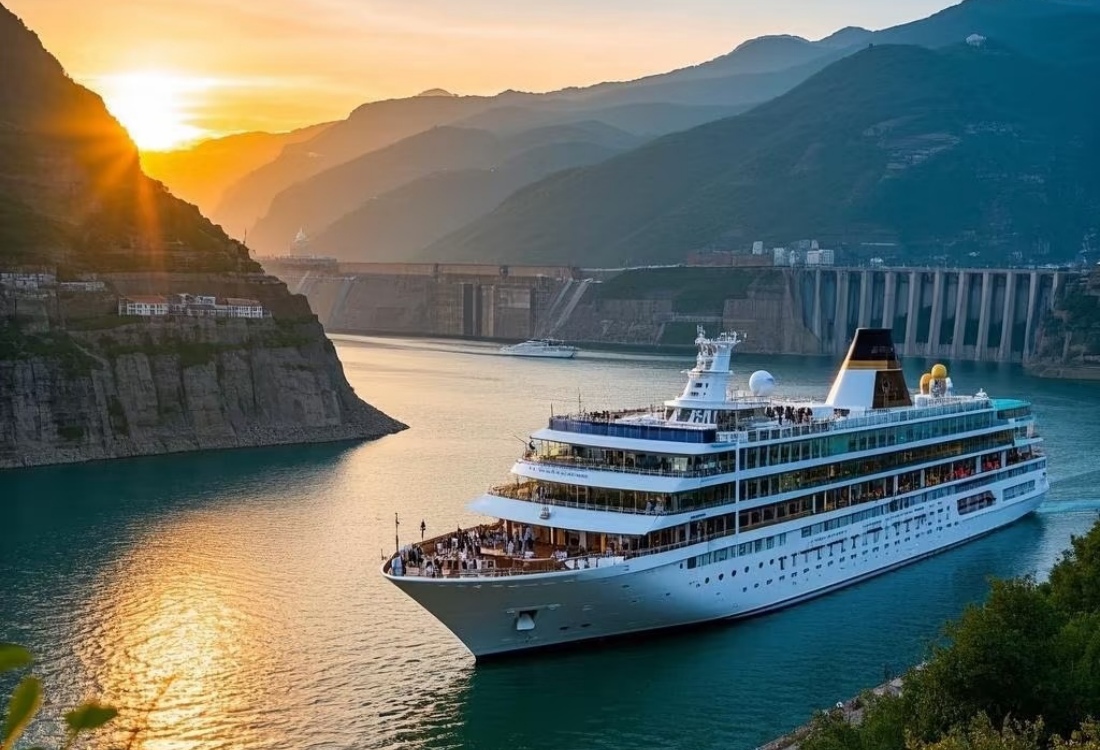Table of Contents
ToggleThis guide provides comprehensive insights into planning and executing a climb of Mount Everest from the Chinese side. The guide walk you through all the necessary information, from securing permits and understanding the route, to choosing the best season and ensuring a safe and responsible expedition. Prepare to discover the allure of Tibet and the majestic North Face of Mount Everest.
Permits and Regulations for Mount Everest (China)
Successfully obtaining the necessary permits is a critical first step for any foreign national planning to climb Mount Everest from the Chinese side. The process is managed by Chinese authorities and requires careful planning well in advance of your expedition.
Essential Permits Required for Climbing Mount Everest
Climbing Mount Everest from Tibet involves a multi-layered permit system:
- Chinese Visa: This is the foundational requirement. You typically apply for a standard Chinese tourist visa through the Chinese Embassy or Consulate in your home country. Support from a licensed travel agency, including proof of itinerary and accommodation, is usually needed.
- Tibet Travel Permit: This permit is mandatory for all foreign travelers entering the Tibet Autonomous Region. It must be obtained through a registered tour operator who will arrange your tour. You cannot apply for this independently.
- Aliens’ Travel Permit: Required for travel to “unopened” or restricted areas within Tibet, including the Mount Everest region (Qomolangma National Nature Preserve). Your tour operator will also handle this.
When is the Best Time to Climb Mount Everest from China?
Timing your Mount Everest expedition correctly is paramount for increasing your chances of a safe and successful summit. The weather patterns around the world’s highest peak dictate very specific climbing windows.
Climb Mount Everest in Spring
The most popular and generally considered optimal period for climbing Mount Everest from the North (Tibetan) side is in spring, typically from late April to mid-May, sometimes extending into early June. During this season:
- Stable Weather: The harsh winter winds subside, and before the summer monsoon arrives, there’s often a period of relatively stable weather with clearer skies. The jet stream, a high-altitude wind current, tends to move north of Mount Everest during this time, leading to calmer conditions on the summit.
- Favorable Temperatures: While still extremely cold at high altitudes, temperatures are generally less severe than in winter or the post-monsoon season. This makes for harder ice surfaces, which can be beneficial for climbing with crampons.
- Sufficient Daylight: Longer daylight hours provide more time for climbing activities at high camps and during the summit push.
Climb Mount Everest in Autumn
Autumn is a less common season for climbing Mount Everest, from September to October. The average temperature at the base camp typically ranges from -20°C to -10°C (-4°F to 14°F).
- Clear Views: After the monsoon rains have cleared the atmosphere, visibility can be excellent, offering stunning panoramic views.
- Colder and More Snow: However, this period is typically colder than the spring, and there’s a higher likelihood of fresh snow accumulation from the receding monsoon, which can make route conditions more challenging and increase avalanche risk.
- Shorter Days: Daylight hours are shorter compared to spring, which can impact climbing schedules.
Due to these factors, fewer teams attempt Mount Everest from the North in autumn.
Periods to Avoid for Climbing Mount Everest
Climbing Mount Everest is generally not advisable during:
- Winter (November to February): Extreme cold, very high winds, and minimal daylight make winter ascents exceptionally dangerous and rare.
- Monsoon Season (June to August): Heavy snowfall, poor visibility, and unstable snow conditions make the mountain largely unclimbable and highly dangerous.
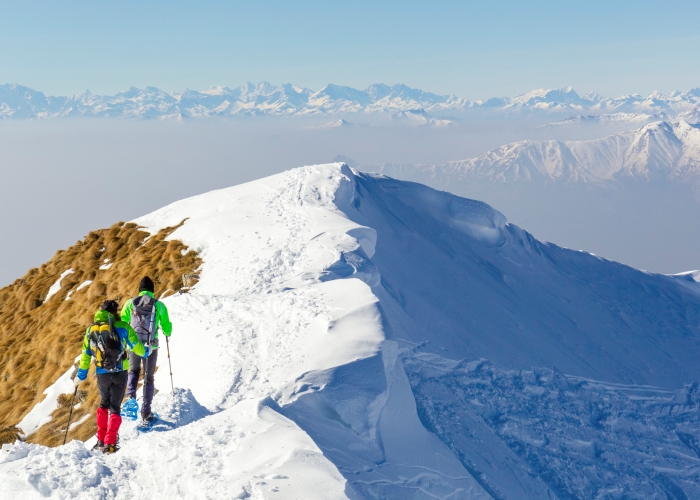

The North Ridge Route for Climbing Mount Everest from China
The primary route to summit Mount Everest from the Chinese side is via the North Col and the Northeast Ridge. This historic route was notably used by early British expeditions in the 1920s and 1930s and was the path for the first reported ascent from this side by a Chinese team in 1960.
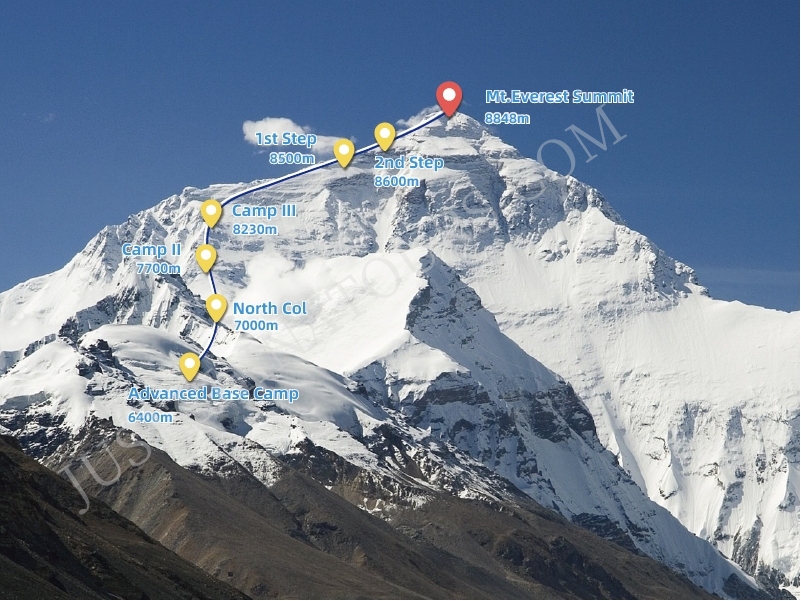
Approach to Mount Everest Base Camp (North)
Located at an altitude of approximately 5,200 meters (17,060 feet) in the Qomolangma National Nature Preserve, North Base Camp is accessible by road from Lhasa via Shigatse and Tingri. Climbers typically spend several days here to acclimatize. It offers stunning views of Mount Everest and basic facilities including tents, meals, and medical support arranged by the expedition team.

9 Days Tibet Lhasa to Shigatse Tour
Establishing High Camps of Mount Everest
From North EBC, the acclimatization and ascent process involves establishing a series of higher camps:

From Base Camp to Advanced Base Camp (ABC)
Located at around 6,400 meters (21,000 feet) on the East Rongbuk Glacier. Advanced Base Camp offers a dramatic view of Mount Everest’s North Face. Climbers spend more time here to adjust to the altitude. This is where acclimatization rotations begin—going up to higher camps and returning to ABC for rest.
ABC is well-equipped with kitchen tents, communication equipment, and oxygen supplies. From here, the real technical climbing begins.
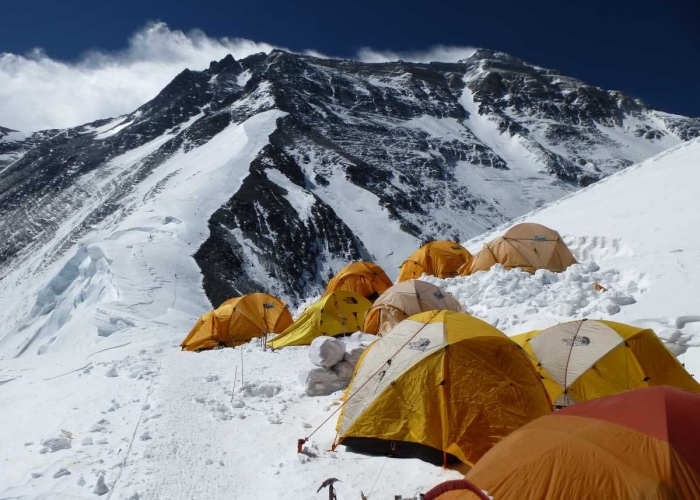
ABC to North Col
Situated on the North Col at approximately 7,000-7,200 meters (23,000-23,600 feet). Reaching the North Col involves climbing a steep ice wall using fixed ropes. This is a physically demanding section and the first part where climbers start to feel the intense effects of altitude. The North Col is often used as Camp I, and serves as a critical staging point for summit bids.
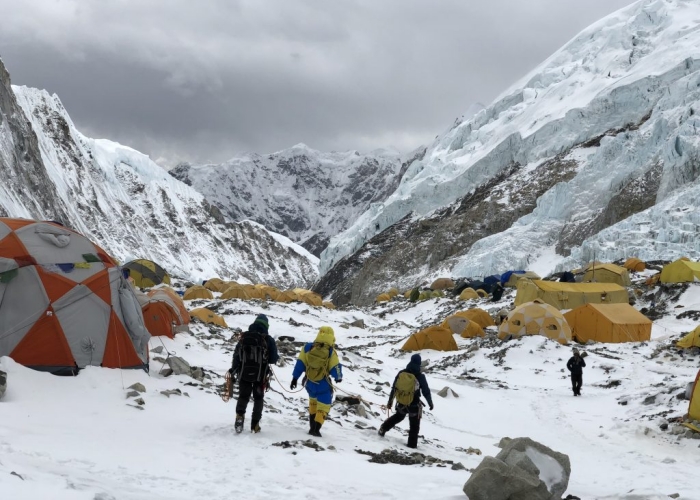
North Col to Camp II
Positioned on the rocky North Ridge at about 7,700-7,900 meters (25,260-25,900 feet). Climbers move along a long snow-covered ridge to reach Camp II. This is a tough and exposed area, with strong winds and biting cold. Camp II is located on a relatively flat section of the Northeast Ridge and used for rest and preparation before ascending higher.
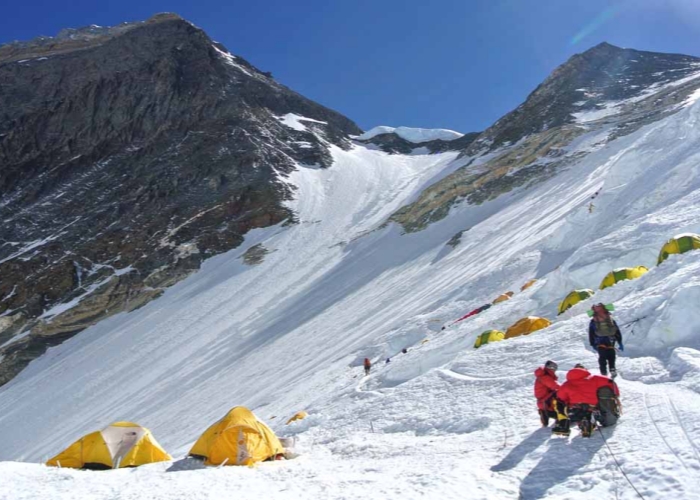
Camp II to Camp III
The final high camp, typically located around 8,230-8,300 meters (27,000-27,230 feet), sits just below the Northeast Ridge proper. A nearly vertical rock face that is one of the most challenging parts of the climb. Camp III is within the Death Zone, where the oxygen level is only about one-third of what it is at sea level. Climbers rest here briefly, often using bottled oxygen, before pushing to the summit.
The Summit Push on Mount Everest
The summit attempt from the highest camp is an arduous undertaking, usually starting late at night. Climbers ascend the Northeast Ridge, navigating key challenges:
- The First Step: A rock buttress at around 8,500 meters.
- The Second Step: The most famous technical crux of the route, a near-vertical rock face at about 8,600 meters. It is now equipped with a ladder, famously installed by a Chinese team in 1975, making it more manageable, though still a formidable obstacle at extreme altitude.
- The Third Step: Another smaller rock step before the final snow slope.
- The Summit Pyramid: A final, steep snow slope leading to the summit of Mount Everest.
Preparing for Your Mount Everest Expedition
A successful ascent of Mount Everest demands meticulous preparation, encompassing physical conditioning, technical skills, mental fortitude, and appropriate gear.
Physical Training
Months, if not years, of dedicated physical training are essential. Focus on:
- Cardiovascular Fitness: Activities like long-distance running, cycling, swimming, and hiking with a weighted pack build the stamina required for sustained effort at high altitudes.
- Strength Training: Core, leg, and back strength are crucial for carrying heavy loads, ascending steep slopes, and managing technical equipment.
- High-Altitude Simulation: If possible, train in altitude simulation chambers or spend time on progressively higher peaks (e.g., 5,000-7,000 meter peaks) to understand your body’s response to altitude.
Altitude Acclimatization
Proper acclimatization is vital to prevent severe altitude sickness like High Altitude Pulmonary Edema (HAPE) or High Altitude Cerebral Edema (HACE). The expedition itinerary will incorporate a gradual ascent profile with rest days and acclimatization rotations (climbing high, sleeping low) to allow your body to adapt to the thinning air. Some expeditions might involve trekking below 4,500m for 7-10 days initially.
Essential Gear for Mount Everest
Having the right gear is critical for safety and success. Key items include:
- Technical Climbing Gear: High-altitude mountaineering boots, crampons, ice axes (usually two), climbing harness, ascenders (Jumar), descenders (figure-8 or similar), carabiners, and slings.
- Extreme Cold Weather Clothing: Insulated down suit (8000m suit), layered thermal clothing, windproof and waterproof outer shells, high-altitude mittens and gloves, balaclava, and insulated headwear.
- Sleeping System: A sleeping bag rated to at least -40°C (-40°F) and a high-quality insulated sleeping pad.
- Oxygen System: Most climbers use supplementary oxygen above 7,000-7,500 meters. This includes oxygen cylinders, a regulator, and a mask. Ensure you are familiar with its operation.
- Other Essentials: Backpack (large expedition pack and smaller summit pack), headlamp with spare batteries, glacier goggles, sunscreen, lip balm with UV protection, first-aid kit, water bottles or hydration system (with insulation to prevent freezing), and a satellite phone or communication device for emergencies.
Safety and Key Considerations on Mount Everest
Technical Challenges and Route Safety
The North Ridge of Mount Everest has steep ice slopes and technical rock sections (like the Three Steps). Proficiency with ice axe, crampons, and fixed-line ascent (using ascenders/Jumars) and descent is mandatory. Always use safety tethers and follow guide instructions, especially on exposed terrain. Double ropes and secure anchor points are often used by guiding teams to mitigate fall risks on steeper sections.
Managing Altitude and Health
Altitude Sickness: Acute Mountain Sickness (AMS), High Altitude Cerebral Edema (HACE), and High Altitude Pulmonary Edema (HAPE) are serious threats. Strict adherence to acclimatization schedules is crucial. Recognize early symptoms (headache, nausea, dizziness, fatigue) and communicate immediately with your guides. Descent is the primary treatment for severe altitude sickness.
Other Health Risks: Frostbite, hypothermia, dehydration, and exhaustion are common. Proper gear, hydration, nutrition, and self-monitoring are essential.
Emergency Preparedness
Emergency evacuation on the Chinese side of Mount Everest is more complex and limited than on the Nepalese side. Helicopter rescues above Base Camp are rare and often not possible due to altitude and political restrictions. Evacuation typically involves a challenging and slow descent by land. Therefore:
- Carry comprehensive travel and rescue insurance that specifically covers high-altitude mountaineering.
- Ensure your expedition has emergency oxygen, a well-stocked medical kit, and reliable communication (satellite phone).
- Be aware of the team’s emergency and contingency plans.
Final Tips for Aspiring Mount Everest Climbers from China
- Book Early: Permits and guide slots fill up months in advance. Start planning 12-18 months ahead.
- Contingency Planning: Build extra days into your itinerary for weather delays or acclimatization needs.
- Flexibility: Be prepared to adjust plans based on weather or team conditions. Summit windows on Mount Everest can be brief.
- Communication: Maintain regular contact with your support team and monitor weather forecasts closely.
Frequently Asked Questions (FAQs)
How long does a Mount Everest expedition from China typically take?
A typical expedition to climb Mount Everest from the Chinese side takes around 6 to 9 weeks (40-60 days). This includes travel time, acclimatization periods at various altitudes (including rotations to higher camps), and waiting for a suitable weather window for the summit push.
What kind of experience do I need to climb Mount Everest from China?
You need extensive prior high-altitude mountaineering experience. This should include successful ascents of several peaks over 6,000m and ideally at least one 7,000m or 8,000m peak. Proficiency in ice and snow climbing techniques, use of crampons and ice axe, fixed-rope ascension, and glacier travel is essential. You also need to be in peak physical and mental condition.
Can I climb Mount Everest from China without a guide?
No, independent or unguided climbs of Mount Everest from the Chinese side are generally not permitted for foreign nationals. You must be part of an organized expedition managed by a CTMA-licensed operator, which will include guide services.






